A new Green Revolution is afoot, neo-farmers bring in varied expertise to script success stories
For
22-year-old Achintya Anand, it was in 2014 that the seeds of a
life-transforming career change were sown. In a bid to understand the
ingredients he cooked with (Anand was an executive chef), he began
sowing and growing at home. The success and quality of the produce led
to Krishi Cress, now a supplier of microgreens in and around Delhi. The
in-house business of potted greens has in a year’s time spilled over to a
1.5-acre plot of land nearby where Anand plans to get into the
alternate, refreshing universe of bhindi, baingan, broccoli and bunch
grapes. All the produce, like microgreens, will be sold farm-fresh,
within a few hours of harvest. Anand aims to make the farm an integrated
one, “complete with insects, animals and birds. The idea is to bring
back the concept of a self-sustaining farm and provide the consumer with
good produce through collective action with the farming community”.
Anand is among a new crop of young Indians who are turning back to
the soil, many giving up high-paying corporate jobs to get their hands
dirty in farm and related careers like horticulture, fruiticulture,
floriculture and dairy farming. Curiously, none of them have been lured
by any romanticised notion of farming as a tax-free pastoral pursuit. A
few were disenchanted with life in the fast lane of corporate wage
slavedom. “The lack of corporate job security, coupled with work
pressure, is compelling professionals to look for alternatives,” says Dr
T. Manjunatha Rao, director, Indian Institute of Horticultural
Research. For others, the switchover came as part of a need to fashion a
wholesale lifestyle change—or a near-evangelical mission to save the
world, or at least one small plot of it.
Gayatri Bhatia, 30, an environment consultant for seven years now,
was appalled by the excessive use of DDT and genetically modified seeds.
Realising that she needed to practise what she preached, she started
organic farming on a 10-acre family plot in Wada, near Mumbai. Today,
Vrindavan Farm produces on average 5,000 kg of vegetables and fruits a
year, in addition to herbs. In many cases, these neo-farmers are rank
outsiders to the world of rhizomes and row crops, mostly drawn to it by a
larger calling. Like Nisha Srinivasan and husband Ragunath
Padmanabhan, who were keen to explore an alternative lifestyle path
inspired by the philosophy of ServiceSpace, a volunteer-run group that
fuses technology with social responsibility. The couple set up an
agroforest on a 9-acre plot in Alandura village near Coimbatore in Tamil
Nadu, where today they run a farm based on natural farming principles,
and run community programmes, including training in organic farming,
rural entrepreneurship and folk arts. Their son Aum is being
‘farm-schooled’ on the premises, which in some ways is a barometer of
the wholesale commitment to—and immersion in—their new way of life.
“We’ve become rural folk,” says Srinivasan.
 Photograph by Amit Haralkar
Photograph by Amit Haralkar
Anjali Raju, 34 Horticulturist, Agriculturist, Dairy farmer
Kabini
Ditching a banking career in the US, Anjali came home to Hyderabad and
began dairy farming. It was thanks to farming that she met her husband
as they trained people on organic farming methods. Now settled in
Kabini, the couple run a 30-acre farm.
“The idea was to set up a
self-sustaining farm, each element for the other and no addition...it’s
attention to what already exists.”
Likewise, Nikki Chaudhary, 32, who completed an MSc in business
economics from the University of Surrey and was teaching there, gave
it up to start a dairy farm in Pilibhit, Uttar Pradesh, under the state
government’s Kamadhenu Yojana. Husband Gaurav, an economist,
returned to his family roots in agri-business, but has taken it to a
higher orbit of growth and revenue. “It more than makes up for the
downsides, like the fact that where we live, the nearest restaurant is a
two-hour drive away,” says Nikki. For others, like 36-year-old Pranay
Juvvadi, who trained to be a doctor in the US, the call of his
“watan ki mitti” proved
too hard to resist. His entire family is in the US, but he returned to
his ancestral 36-acre farm in Hyderabad, to tend to mango trees. “I may
have earned more as a doctor in the US,” he acknowledges. “But to me,
this is the life, even though it’s hard work, particularly given the
difficulties in sourcing farm labour.”
|
|
|
| Anand aims to make the farm an integrated one, “complete with insects, animals and birds. It’ll be a self-sustaining farm”. |
|
|
|
|
|
Nothing
exemplifies these neophytes more than The Urban Farmers, a group of
five youngsters in Chennai, who are giving new meanings to the
expression “terrace cultivation”. As part of an MBA project, they
devised a plan for a rooftop farm, and after a few years in the
corporate maze, have banded together to start up an urban farming
project to harvest every rooftop and vacant, cultivable space in the
city. They’ve even started up a farm consultancy business and
established a franchise model, and are scaling up to corporate projects,
which give them larger spaces to work on. Says Kern Agarwal, 28, one of
the core members, “We want Chennai to become like any French city: full
of organic gardens.” Indeed, more Indian cities could soon be going
green, thanks to the efforts of Anand Shankar, who co-founded
Springfinity, to sell horticultural kits for city folks to easily set
up their own kitchen gardens. Each kit, priced at Rs 1,999, includes
seeds for three vegetables, soil and manure, a sprayer and a gardening
guide.
This contrarian trend of youngsters taking up farming goes against
the grain of traditional subsistence farmers wanting to take up jobs in
the big cities. According to a 2014 study on the State of Indian
Farmers, conducted by the Centre for the Study of Developing Societies
(CSDS), which surveyed about 5,000 farm households across 18 states, 62
per cent of farmers said they would quit farming for employment in the
cities. “Many traditional farmers are giving up on agriculture, but
simultaneously many educated youngsters are seeking out alternative
career choices in farming,” notes agricultural scientist Dr M.S.
Swaminathan, who pioneered the Green Revolution in India in the 1960s.
He sees this as a positive trend towards the modernising of
agriculture. “To beat the volatility of the farming business, we need
technological advancement, and we’re starting to see this, with
youngsters bringing in modern engineering techniques and information
technology. And given their business acumen, they also add value to the
farming practice.”
As Swaminathan points out, the embrace of modern agri-technology,
fusing it with the wisdom of Japanese natural farming icon Masanobu
Fukuoka, along with business best practices, helps this new crop of
farmers hedge some of the risks associated with commercial agriculture.
For instance, Vinoth Kumar, 32, who gave up a career in sales, started
an integrated farm in Cheyur, near Chennai, where ‘biodynamic farming’
principles are applied. “We have a chicken farm on top of a fish pond,
so the chicken waste becomes fish food; and the water from the fish pond
is channelled into the farm, setting up a cycle of efficient use of
resources,” he says. Similarly, Anand now plans to set up an aquaponics
farm, which fuses aquaculture with hydroponics techniques. And in
Bangalore, neo-farming couple Nithin Sagi and wife Hansa, both just
34, are looking to practice hydroponics in a greenhouse. The two
practise “hands-on” farming; where they grow their produce in a
controlled environment to maximise personal monitoring.
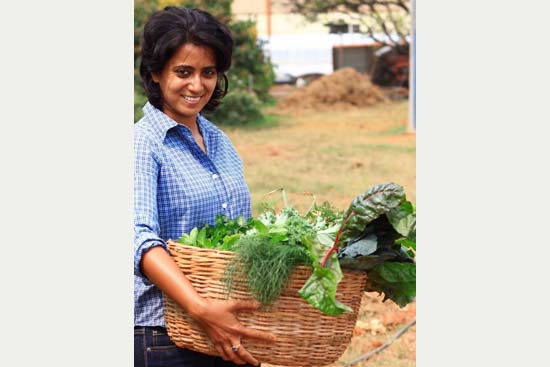
Gayatri Bhatia, 30 Horticulturist, Fruiticulturist
Mumbai
Gayatri’s dive into the farming world
came as an altruistic move of saving cultivable land from DDT and other
chemicals. On a soil replenishment mission, Gayatri began cultivation
on a 10-acre piece of land just outside the city, working on the soil
one patch at a time. “Slow nurturing is my way,” she says. Today, her
farm produces 5,000 kg of fruits and vegetables, which she believes in
supplying fresh to areas around the farm.
“Soil is the most essential
element, but it’s also the most neglected. Care for it, reducing its
burden, will ensure it’s 100% efficient.”
It isn’t confined to the fields alone, the invoking of farmyard tech.
At her dairy farm in Pilibhit, Nikki has installed mechanised milking
facilities and distillation parlours. The cows even have solar-powered
water sprinklers to insulate them from the fury of the hot summer winds.
For breeding purposes, frozen semen is imported. Biodynamic farming
often invokes a common-sensical approach to practising agriculture that
harnesses the rhythms of the universe. Anjali Raju, who gave up the
good life of a New York banker to set up a dairy farm in her native
Hyderabad, and now runs a 30-acre biodynamic farm in Kabini, abides by a
27-day lunar calendar cycle for her farming operations. For 13 days
when the moon is waxing, they tend to crops above the ground; for the 13
days when the moon is waning, the subterranean crops get their
undivided attention. No work is done on New Moon Day.
Given their scientific approach to their new-found career, the
neo-farmers abide by a few unimpeachable articles of faith. Nearly every
one of them is committed to soil replenishment as a long-term goal,
even if it means forsaking produce on a part of their plot or a season’s
crop in the short run. “My method is a little old-school,” acknowledges
Bhatia. “I am patient about waiting for the land to be productive.”
And for many of them, size of plot holdings doesn’t matter overmuch. In
fact, given their emphasis on natural farming, sustainability counts for
more than scalability. “With organic farming, the smaller the farm, the
better the control, and the more intimate the nature of interaction
between farmer and consumer,” points out Raju. And committed as they are
to the soil-to-plate model, where freshness of produce is paramount,
most of these neo-farmers have elevated the concept of selling only in
their geographical vicinity to an inviolable doctrine.
The economic sustainability of neo-farming still relies a lot on tax
exemption of agricultural income and on subsidies. Says Aman Ahuja, who
worked in a food processing multinational before returning to farm in
his ancestral land in Khuban, Punjab: “In horticulture, the costs are
high, and so are the risks. But by adopting agri-technology, and with
even simple initiatives like greenhouses and cold storage chains, it is
possible to tweak larger profits.” Branching off into ancillary
businesses is a proven way to stabilise farm incomes. Karan Manral, a
horticulturist in Goa, additionally runs a consultancy to help wannabe
kitchen gardeners and gardenistas go green, and a seed store that sells
across India. Income from dairy farming doesn’t qualify for tax
exemption, which causes Daljeet Singh, president of the Progressive
Dairy Farming Association, to bristle. “Dairy farming needs special
infrastructure and production equipment to be viable, and typically big
dairy businesses can’t avail of even the few subsidies that are on
offer,” he says.
But despite these grouses on the margins, the entry of keen young
minds and bodies into the farming ecosystem bodes well for the future,
agree experts. This trend of educated youth taking up the sickle “will
likely change the face of farming in the long run”, reckons Dr B.J.
Pandian, director of the Water Technology Centre at the Tamil Nadu
Agricultural University. On its part, the university has increased the
number of short-term courses on offer for these neo-farmers, in response
to an elevated demand.
But in the final analysis, what draws young Indians to seek out this
contrarian career option is the fact that it fulfils some primal needs, a
curious resonance with the universe. “You begin to look philosophically
at what ‘career growth’ means to you,” reasons Manral. “Today, I eat
food that is richer than any millionaire’s...and that surely means a lot
in the calculus of life.”
Thanks to http://www.outlookindia.com/article/the-jai-kisan-jam-band/295538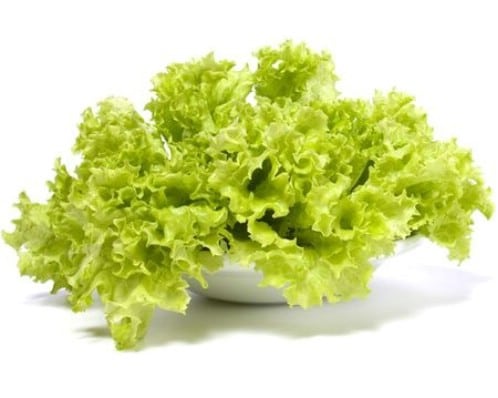 Lettuce,
Bok Choy and cabbage are relatively easy to grow from scraps. Instead
of throwing out those leftover leaves, simply place them in a bowl with
just a bit of water in the bottom. Keep the bowl somewhere that gets
good sunlight and mist the leaves with water a couple of times each
week. After 3 or 4 days, you will notice roots beginning to appear along
with new leaves. When this happens you can transplant your lettuce or
cabbage in soil.
Lettuce,
Bok Choy and cabbage are relatively easy to grow from scraps. Instead
of throwing out those leftover leaves, simply place them in a bowl with
just a bit of water in the bottom. Keep the bowl somewhere that gets
good sunlight and mist the leaves with water a couple of times each
week. After 3 or 4 days, you will notice roots beginning to appear along
with new leaves. When this happens you can transplant your lettuce or
cabbage in soil.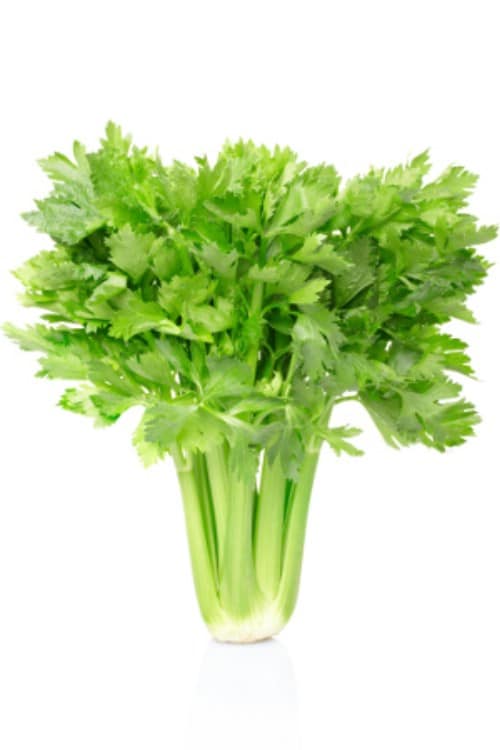 Celery
is one of the easiest foods to grow from leftover scraps. Just cut off
the bottom or base of your celery and lay it in a bowl with just a bit
of warm water in the bottom. Keep the bowl in direct sunlight as long as
possible each day and after about a week, you will begin to see the
leaves thickening and growing along the base. When this happens, you can
transplant your celery in soil and wait for it to grow to full length.
Celery
is one of the easiest foods to grow from leftover scraps. Just cut off
the bottom or base of your celery and lay it in a bowl with just a bit
of warm water in the bottom. Keep the bowl in direct sunlight as long as
possible each day and after about a week, you will begin to see the
leaves thickening and growing along the base. When this happens, you can
transplant your celery in soil and wait for it to grow to full length.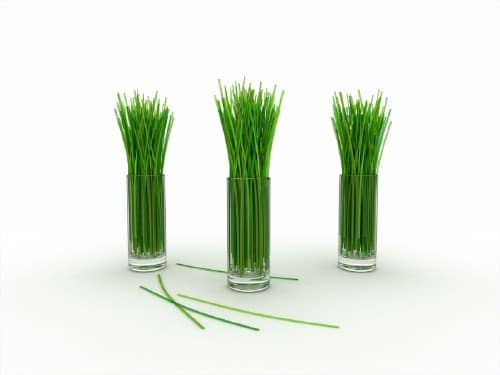 If
you love using lemongrass but have a difficult time finding it, simply
regrow your own. Lemongrass will grow just like regular grass. You just
place the root that is leftover in a glass bowl or jar with enough water
to cover it and leave it in the sunlight. After about a week, you will
notice new growth and when this happens you can transplant your
lemongrass in a pot or in your herb garden.
If
you love using lemongrass but have a difficult time finding it, simply
regrow your own. Lemongrass will grow just like regular grass. You just
place the root that is leftover in a glass bowl or jar with enough water
to cover it and leave it in the sunlight. After about a week, you will
notice new growth and when this happens you can transplant your
lemongrass in a pot or in your herb garden.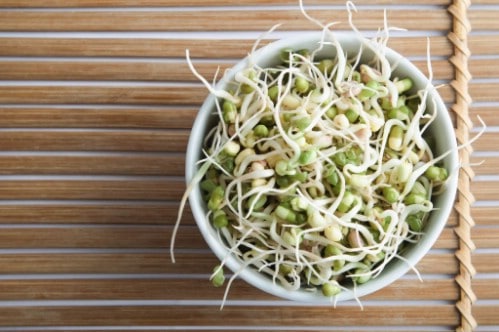 If
you love cooking with bean sprouts you can grow them yourself as well.
You just need to soak a tablespoon or so of the beans that you want to
grow in a jar with shallow water. Leave this overnight and in the
morning, drain the water off and put the beans back in the container.
Cover the container with a towel overnight and rinse them the next
morning. Keep doing this until you notice the sprouts begin to appear
and then until they reach the size that you want. This works well with
mung beans and wheat berries.
If
you love cooking with bean sprouts you can grow them yourself as well.
You just need to soak a tablespoon or so of the beans that you want to
grow in a jar with shallow water. Leave this overnight and in the
morning, drain the water off and put the beans back in the container.
Cover the container with a towel overnight and rinse them the next
morning. Keep doing this until you notice the sprouts begin to appear
and then until they reach the size that you want. This works well with
mung beans and wheat berries.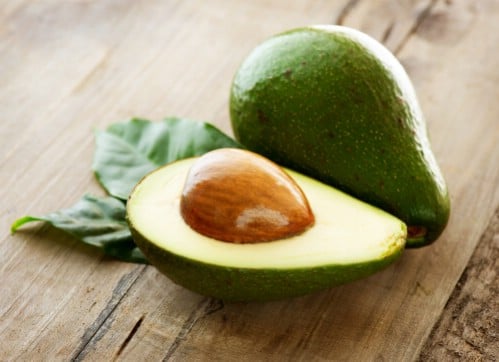 Avocado
seeds can be used to grow a steady supply of this super food. You just
have to wash the seed and use toothpicks to suspend it over water in a
bowl or jar. The water should come up enough to cover the bottom inch of
the seed. Keep the container in a warm place but not in direct sunlight
and remember to check the water every day and add more as needed. It
can take up to six weeks for the stem and roots to appear and once the
stem reaches about 6 inches you will need to cut it down to 3 inches.
When leaves begin appearing, you can plant the seed in soil, remembering
to leave about half of it above ground.
Avocado
seeds can be used to grow a steady supply of this super food. You just
have to wash the seed and use toothpicks to suspend it over water in a
bowl or jar. The water should come up enough to cover the bottom inch of
the seed. Keep the container in a warm place but not in direct sunlight
and remember to check the water every day and add more as needed. It
can take up to six weeks for the stem and roots to appear and once the
stem reaches about 6 inches you will need to cut it down to 3 inches.
When leaves begin appearing, you can plant the seed in soil, remembering
to leave about half of it above ground.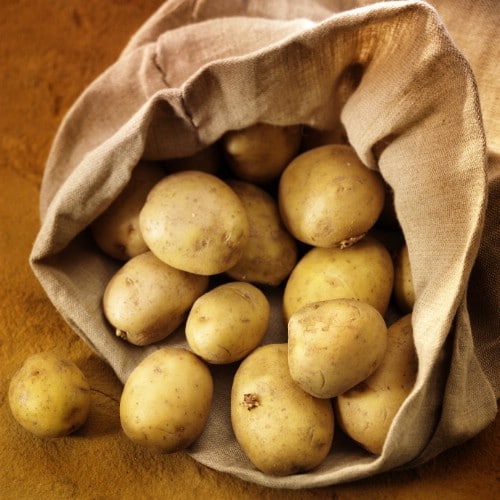 Virtually
everyone knows that potatoes can be grown from potato peelings. You
need peelings that have eyes on them. Cut those peelings into two inch
pieces, ensuring that there are at least two or three eyes on each
piece. Allow them to dry out overnight and then simply plant them about
four inches deep in your soil. Make sure that the eyes are facing up
when planting. It will take a few weeks before you see the potato plant
begin to grow.
Virtually
everyone knows that potatoes can be grown from potato peelings. You
need peelings that have eyes on them. Cut those peelings into two inch
pieces, ensuring that there are at least two or three eyes on each
piece. Allow them to dry out overnight and then simply plant them about
four inches deep in your soil. Make sure that the eyes are facing up
when planting. It will take a few weeks before you see the potato plant
begin to grow. Sweet
potatoes can be grown much like regular potatoes. You just have to cut
the sweet potato in half and suspend it using toothpicks above a
container of shallow water. Roots will begin to appear in just a few
days and sprouts will be seen on top of the potato around that same
time. Once those sprouts reach about four inches or so in length, just
twist them off and place them in a container of water. When the roots
from this container reach about an inch in length, you can plant them in
soil.
Sweet
potatoes can be grown much like regular potatoes. You just have to cut
the sweet potato in half and suspend it using toothpicks above a
container of shallow water. Roots will begin to appear in just a few
days and sprouts will be seen on top of the potato around that same
time. Once those sprouts reach about four inches or so in length, just
twist them off and place them in a container of water. When the roots
from this container reach about an inch in length, you can plant them in
soil. Ginger
root is very easy to grow and once you get started, you can keep your
supply of ginger full. You just need to plant a spare piece of your
ginger root in potting soil, making sure that the buds are facing up.
You will notice new shoots and new roots in about a week or so and once
this happens you can pull it up and use it again. Remember to save a
piece of the rhizome so that you can replant it and grow more for the
next time you need it.
Ginger
root is very easy to grow and once you get started, you can keep your
supply of ginger full. You just need to plant a spare piece of your
ginger root in potting soil, making sure that the buds are facing up.
You will notice new shoots and new roots in about a week or so and once
this happens you can pull it up and use it again. Remember to save a
piece of the rhizome so that you can replant it and grow more for the
next time you need it.
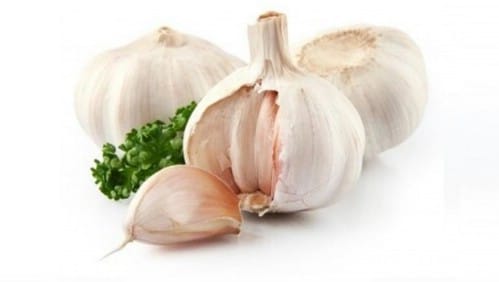 Garlic
is really easy to grow and can be done from just one clove. When you
buy garlic, you get several cloves so just pull one off and plant it
with the roots facing down in potting soil. Garlic likes plenty of
direct sunlight so in warmer weather, keep it outdoors in the sun during
the day. Once you notice that new shoots have established, cut the
shoots back and your plant will produce a bulb. You can take part of
this new bulb and plant again.
Garlic
is really easy to grow and can be done from just one clove. When you
buy garlic, you get several cloves so just pull one off and plant it
with the roots facing down in potting soil. Garlic likes plenty of
direct sunlight so in warmer weather, keep it outdoors in the sun during
the day. Once you notice that new shoots have established, cut the
shoots back and your plant will produce a bulb. You can take part of
this new bulb and plant again.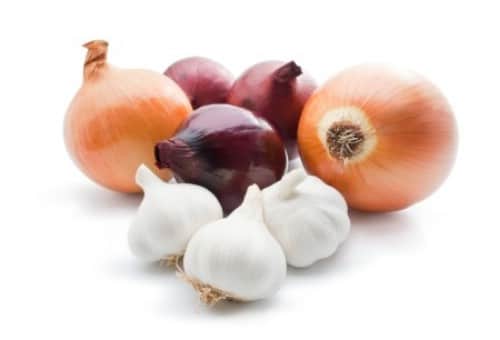 Onions
are very easy to grow indoors or out. You just have to cut the root of
the onion off and make sure that you leave about a half an inch of onion
when you do. Cover lightly with potting soil and keep in a sunny area.
For green onions, simply put the white base with the roots intact in a
container of water and place in direct sunlight. Change the water out
every few days and the green will continue to grow. Just snip what you
need and allow it to grow as long as you like.
Onions
are very easy to grow indoors or out. You just have to cut the root of
the onion off and make sure that you leave about a half an inch of onion
when you do. Cover lightly with potting soil and keep in a sunny area.
For green onions, simply put the white base with the roots intact in a
container of water and place in direct sunlight. Change the water out
every few days and the green will continue to grow. Just snip what you
need and allow it to grow as long as you like. If
you tend to carve pumpkins on Halloween, you can save those seeds and
plant them. Even if you prefer toasting your seeds for a yummy snack,
you can save a couple for growing new pumpkins. Just spread the seeds
out in a sunny area outdoors and cover with soil. You can also plant an
entire pumpkin. Once you finish displaying that Jack-O-Lantern, just
fill it with soil and plant the entire thing.
If
you tend to carve pumpkins on Halloween, you can save those seeds and
plant them. Even if you prefer toasting your seeds for a yummy snack,
you can save a couple for growing new pumpkins. Just spread the seeds
out in a sunny area outdoors and cover with soil. You can also plant an
entire pumpkin. Once you finish displaying that Jack-O-Lantern, just
fill it with soil and plant the entire thing.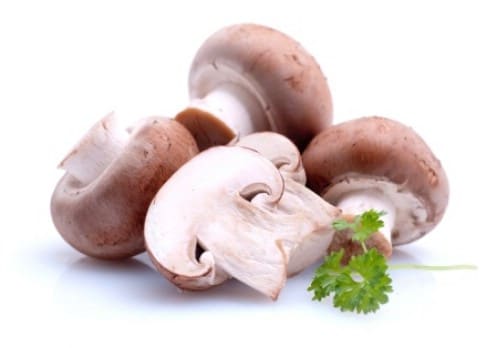 You
can grow mushrooms from cuttings, although they are a bit more
difficult than many other vegetables. You will need a warm area with a
lot of humidity and soil that is rich in nutrients. It is much better to
grow your mushrooms in a pot as opposed to in the ground because you
have a better shot at controlling the temperature and the humidity. You
just have to cut away the head of the mushroom and plant the stalk or
stem in the soil. Leave the very top exposed and this base will begin to
grow a new head.
You
can grow mushrooms from cuttings, although they are a bit more
difficult than many other vegetables. You will need a warm area with a
lot of humidity and soil that is rich in nutrients. It is much better to
grow your mushrooms in a pot as opposed to in the ground because you
have a better shot at controlling the temperature and the humidity. You
just have to cut away the head of the mushroom and plant the stalk or
stem in the soil. Leave the very top exposed and this base will begin to
grow a new head. You
can grow a number of chilies from the seeds that are leftover. Just
collect the seeds from your that you have on hand. Plant them in potting soil and keep in direct
sunlight unless it is warm outside and then you can just plant them in
your garden area. this grow relatively fast and don’t require a lot
of care. Once you get a new crop, just save some of the seeds for
replanting again.
You
can grow a number of chilies from the seeds that are leftover. Just
collect the seeds from your that you have on hand. Plant them in potting soil and keep in direct
sunlight unless it is warm outside and then you can just plant them in
your garden area. this grow relatively fast and don’t require a lot
of care. Once you get a new crop, just save some of the seeds for
replanting again.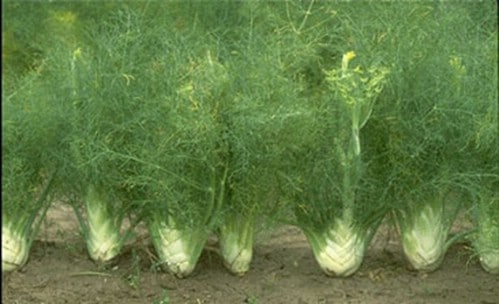 Growing
fennel requires that you keep the roots intact. You need about an inch
of the base of the fennel to get it to regrow. Just place this base in a
container with about a cup of water and leave it in direct sunlight.
The windowsill is the perfect place to grow fennel. When the roots grow
strong and you notice new green shoots coming up from the center of the
base, you can transplant into soil.
Growing
fennel requires that you keep the roots intact. You need about an inch
of the base of the fennel to get it to regrow. Just place this base in a
container with about a cup of water and leave it in direct sunlight.
The windowsill is the perfect place to grow fennel. When the roots grow
strong and you notice new green shoots coming up from the center of the
base, you can transplant into soil.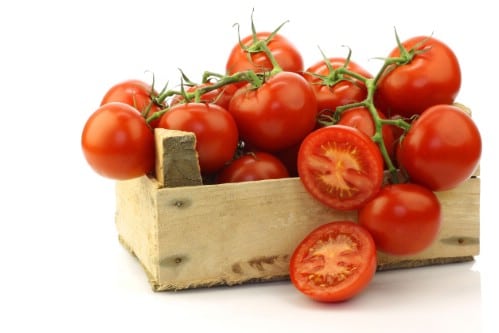 Tomatoes
can be grown just by saving those seeds that you probably throw out
anyway. You just have to rinse the seeds and allow them to dry. Plant in
a good, rich potting soil until you notice growth coming in. Allow the
seeds to get a few inches high before transplanting them outdoors.
During cold weather you can grow your tomatoes indoors. Just remember to
keep them in an area that gets plenty of sunlight and water a few times
each week.
Tomatoes
can be grown just by saving those seeds that you probably throw out
anyway. You just have to rinse the seeds and allow them to dry. Plant in
a good, rich potting soil until you notice growth coming in. Allow the
seeds to get a few inches high before transplanting them outdoors.
During cold weather you can grow your tomatoes indoors. Just remember to
keep them in an area that gets plenty of sunlight and water a few times
each week.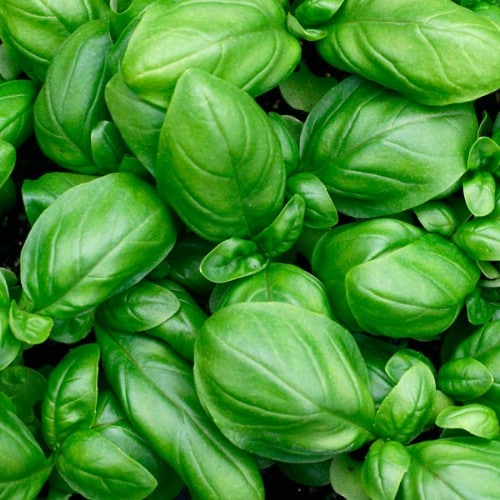
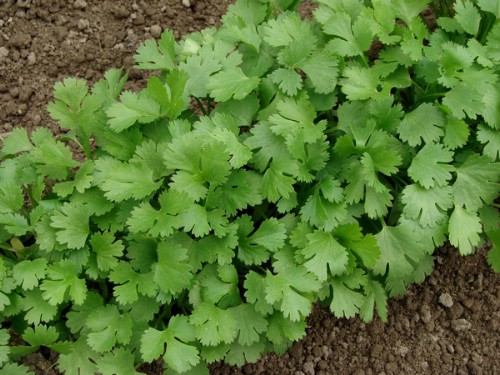 Cilantro
can be grown from scraps as well. Just place the bottom of the stem in a
glass of water and leave in a bright area, near a windowsill perhaps.
When the roots grow a couple of inches long, you can transplant the
cilantro into a pot and you will notice new sprigs in just a few weeks.
Cilantro
can be grown from scraps as well. Just place the bottom of the stem in a
glass of water and leave in a bright area, near a windowsill perhaps.
When the roots grow a couple of inches long, you can transplant the
cilantro into a pot and you will notice new sprigs in just a few weeks.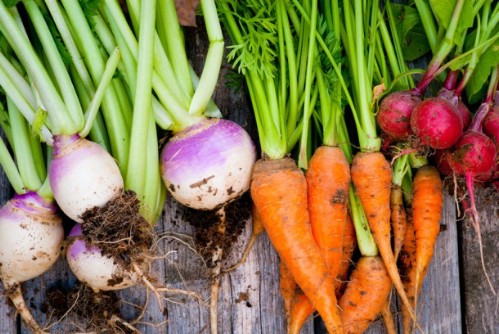 Root
plants, turnips grow well from clippings or leftover scraps. You just
need to salvage the tops of the turnip and place in a container of
water. You should notice new green tops growing in just a few days after
you begin. Just allow the root to continue growing until it’s ready to
be transplanted in the ground. This works with many root vegetables such
as beets, turnips and even parsnips.
Root
plants, turnips grow well from clippings or leftover scraps. You just
need to salvage the tops of the turnip and place in a container of
water. You should notice new green tops growing in just a few days after
you begin. Just allow the root to continue growing until it’s ready to
be transplanted in the ground. This works with many root vegetables such
as beets, turnips and even parsnips.


